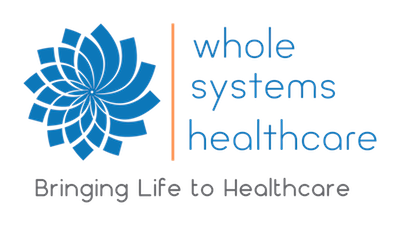Synopsis
- The group of fat soluble vitamins consists of vitamins A, D, E, K1, and K2.
- They are critical for proper immune and nervous system function.
- They represent elements of ying-nutritive qi and wei-defensive qi function in Chinese physiology and the connection of these to jing-essence.
- Lack of these vitamins in the diet is contributing to the epidemic of jing-essence deficiency.
In the last post I examined how B vitamins are perceived in Chinese Medicine. Another group of vitamins need to be examined. These are the fat soluble nutrients that are absolutely essential to health. They are vitamins A, D, E, and K. Vitamin D is especially famous as the “sunshine” vitamin. Vitamin K might be the least well-known, and there are actually two forms, called K1 and K2.
These five vitamins need to be understood as a functional group, just as the B vitamins were. Even though they each have their own functions the interactions among them make them important as a whole system. This leads to important rules if supplementation is necessary.
Fat Soluble Vitamins in Western Physiology
Overall this group of vitamins play critical roles in maintaining immune function and the health of the nervous system. All of the fat soluble vitamins are involved in cell signaling, gene expression, cell growth, proliferation, and differentiation; this is the case especially for the immune and nervous systems. For instance, vitamin A regulates dendritic cells, white blood cells that are vital for capturing invaders and priming the immune system to fight back. Vitamin D enhances innate immunity, inhibits proliferation of cells, and encourages differentiation. Vitamin E is important for T cells to perform their immune functions, and helps prevent upper respiratory infections. Vitamin K is important for phagocytosis (when macrophages “eat” intruders) as well as regulating proliferation and apoptosis (programmed cell death) of neurons. Vitamin D and K work together to regulate calcium levels, important for proper nerve function.
Other interesting interactions exist within this group of vitamins. Vitamin A, D, and K all need each other to function properly; they balance each other to prevent toxicity, and work synergistically to promote health. Taking too much vitamin A can be harmful, but only when vitamin D levels are low. People get the flu more often when the ratio of vitamin D to vitamin A gets too low, even though vitamin A is known to be effective against viral infections. Vitamin K is necessary to help balance the effects of vitamin D, as too much vitamin D without enough K leads to excessive calcium in the blood. Large doses of vitamin A or vitamin E can antagonize vitamin K, leading to decreased clotting and increased risk of bleeding. All these vitamins must be balanced with each other.
Because the immune system needs these vitamins deficiencies can lead to more infections or autoimmune conditions. Deficiencies of vitamins A and D increase the risk of developing an autoimmune condition, as well as leading to increased infections, especially of the lung and gastrointestinal tract. Deficiency of vitamin E leads to neurological conditions, like neuropathies, as well lowered immune function. Vitamin K2 deficiency has been linked to cognitive decline in animal models; in a developing fetus exposure to warfarin (which blocks vitamin K) creates serious brain defects.
Fat Soluble Vitamins in Chinese Physiology
In the previous article I wrote about B vitamins as a manifestation of Spleen qi, and of the various ways this elucidates the role of Spleen function in the support and nourishment of other organ systems. For the fat soluble vitamins this still holds true, as all ingested nutrients are, by definition, aspects of Spleen and Stomach qi. However, this group of vitamins has roles that are very different from the B’s.
| Qi Functions (Lung) | Qi Functions (Spleen) | Qi Functions (Triple Burner) | Blood Functions (Spleen, Liver) | Qi Functions (Kidney) | Yin/Jing Functions (Liver, Kidney) | |
|---|---|---|---|---|---|---|
| Vitamin A | Interacts with thyroid hormone receptor, influences cell differentiation, influences formation of brown adipose cells (brown fat), stimulates and matures white blood cells, stimulates immune response to infection, required for fetal lung maturation | Increases insulin production and secretion, required for development of pancreas and beta-cell function | Necessary for proper formation of extracellular matrix | Stored in the liver, required for vision, regulates growth factors, regulates stem cell development into red blood cells, facilitates incorporation of iron into hemoglobin | Regulate cell growth, proliferation, and differentiation | |
| Vitamin D | Enhances innate immunity, created in the skin, induces differentiation of cells | Increases insulin secretion, increases insulin receptor sensitivity | Increases blood calcium, modified by the liver | Activated by the kidney, pulls calcium from the bone, lowers renin, keeps blood pressure low | Regulate cell growth, proliferation, and differentiation | |
| Vitamin E | Maintains integrity of cell membranes | Prevents oxidization of fats, protects cell membranes | Antioxidant, protects lipids from oxidation, regulate cell growth, proliferation, and differentiation | |||
| Vitamin K1 | Necessary for clotting | |||||
| Vitamin K2 | Important for phagocytosis (macrophage function) | Required for bone and teeth mineralization, prevents arterial calcification | Protects neurons and glial cells from oxidative damage, required for sphingolipid and myelin synthesis |
| Lung Qi Deficiency | Liver Blood Deficiency | Internal Wind | Spleen Qi Deficiency | Kidney Qi/Essence Deficiency | Yin Deficiencies | |
|---|---|---|---|---|---|---|
| Vitamin A | Increased lung and GI infections, hypothyroid, goiter | Night blindness, dry eyes, anemia | Increased risk of diabetes type 1 | Risk of diabetes type 1 | ||
| Vitamin D | Increased autoimmune diseases, increased upper respiratory infections | Parkinson’s disease, stroke | Muscle weakness and pain, insulin resistance, increased autoimmune diseases | Rickets, osteomalacia, osteoporosis, increased risk of falls, hypertension | Autoimmune disease, irritable bowel disease, coronary artery disease | |
| Vitamin E | Decline in immune function, increased upper respiratory infections | Peripheral neuropathy, muscle weakness, visual defects, liver inflammation | Neurologic symptoms, ataxia | Insulin resistance | Oxidative damage to the lens of the eye, breakdown of nerve myelin | |
| Vitamin K1 | Easy bleeding | |||||
| Vitamin K2 | Seizures | Fetal brain defects, dementia(?) | Calcification of arteries |
If the B vitamins are primarily associated with Spleen qi the fat soluble vitamins are much more associated with Lung qi. The Spleen and Lung share a relationship, as they are both Taiyin organs, and from the perspective of the six conformations Taiyin is the system that nourishes the body. In Chinese physiology the Lung is part of the digestive system. It receives the clear qi from the Spleen and spreads it throughout the body (this mirrors the movement of lymph fluid from the GI to the chest cavity). The Lung is also responsible for diffusing wei-defensive qi to the periphery, and thus plays a critical role in immune function.
All these vitamins have functions that are expressions of ying-nutritive qi and wei-defensive qi. Vitamin A is one aspect of the relationship between ying qi and Blood; it has undeniable Blood-related qualities as well as contributing to immune function. This is the nourishment of wei qi by ying qi. Vitamin D, on the other hand, represents the connection of the Kidneys to wei qi, as it clearly has Kidney-related qualities as well as immune functions. It is also manufactured in the skin, a clear connection to wei qi function. These two vitamins balance one another, as ying and wei do. This can be seen in influenza, as lack of wei qi (vitamin D) results in more frequent infections, even with plenty of ying qi (vitamin A). Vitamins E and K have more ying and jing associated functions as they are more yin qualitatively.
The pattern of vitamins working as antioxidants (or participating in antioxidant function) continues with this group. Vitamins E and K2 especially play important roles in preventing oxidative damage. The fact that oxidative damage increases apoptosis, and that K2 helps keeps cells alive, supports the notion that these vitamins have particularly yin functions.
Compared to the B vitamins the fat soluble vitamins are more associated with the functions of Blood, yin, and jing. Qualitatively speaking fat as a substance is heavier and denser than carbohydrate. Blood is heavier and denser than qi, and this is reflected in the difference between the two groups of vitamins. This suggests that the effects of B vitamins on Blood could be understood more from the perspective of the Spleen, whereas the effects of the fat soluble group on Blood could be assigned to the Liver. Though in TCM Blood is often spoken of as belonging to the Liver it is really the Spleen that creates Blood; the Liver both stores and moves Blood, but does not create it. These vitamins also represent the contribution of the Kidney jing to the creation of Blood. The other aspect that lends itself to this analysis is that the fat soluble vitamins can be toxic, whereas the B vitamins are generally not. Toxicity in Chinese physiology is almost always a Blood phenomenon; though qi can become stagnant it does not become toxic.
Lessons to be Learned
Since these vitamins are stored in fat it takes much longer for deficiencies to occur. Compared with the B’s these vitamins are more in the realm of yin and jing, as I mentioned above. The symptoms of deficiency tend more towards lack of ying and Blood, though of course because Blood nourishes qi deficiency symptoms occur in the realm of qi as well. Deficiency doesn’t appear as serious as B vitamin deficiency, and though vitamin D is often supplemented in common foods (like milk) the others rarely appear.
However, examination of historical and traditional diets show that these vitamins are extremely important. Since they are fat soluble, most traditional sources come from animals. Plants contain precursors such as beta-carotene but they are harder for the body to make use of when compared with animal sources. Traditional cultures, especially hunter-gatherer societies, prized animals at certain times of the year because they were extra nutritious, and often saved these types of foods for pregnant women and growing children. This highlights the importance of these vitamins for bolstering jing, as they are necessary for healthy reproduction and development.
In today’s world there is an epidemic of jing deficiency. This can be seen in the facial features and bone structures, as people’s faces have become longer and thinner; it can be seen in the lack of physical resilience and sensitivity to the physical environment; and it can be seen in the increase of people who have reversed sleep cycles, where they sleep while it’s light out but are awake at night (according to Dr. Leon Hammer, this is jing deficiency). Returning to diets that naturally supply more of these important vitamins will go a long way to promoting stronger, healthier people. Part 4 – Vitamin C
References
- Ferland G. Vitamin K, an emerging nutrient in brain function. Biofactors. 38(2):151-157. doi:10.1002/biof.1004
- Ferland G. Vitamin K and the Nervous System: An Overview of its Actions. Adv Nutr. 2012;3(2):204-212. doi:10.3945/an.111.001784
- Higdon J, Drake V, Delage B. Vitamin E. Linus Pauling Institute Micronutrient Information Center. https://lpi.oregonstate.edu/mic/vitamins/vitamin-E. Published 2015. Accessed January 8, 2019.
- Higdon J, Drake V, Delage B. Vitamin K. Linus Pauling Institute Micronutrient Information Center. https://lpi.oregonstate.edu/mic/vitamins/vitamin-k. Published 2014.
- Higdon J, Drake V, Delage B. Vitamin A. Linus Pauling Institute Micronutrient Information Center. https://lpi.oregonstate.edu/mic/vitamins/vitamin-A. Published 2015. Accessed January 28, 2019.
- Higdon J, Drake V, Delage B. Vitamin D. Linus Pauling Institute Micronutrient Information Center. https://lpi.oregonstate.edu/mic/vitamins/vitamin-D. Published 2017. Accessed January 8, 2019.
- Masterjohn C. Nutritional Adjuncts to the Fat-Soluble Vitamins. The Weston A. Price Foundation. https://www.westonaprice.org/health-topics/abcs-of-nutrition/nutritional-adjuncts-to-the-fat-soluble-vitamins/. Published 2013. Accessed January 8, 2019.
- Masterjohn C. On the Trail of the Elusive X-Factor: A Sixty-Two-Year-Old Mystery Finally Solved. The Weston A. Price Foundation. https://www.westonaprice.org/health-topics/abcs-of-nutrition/on-the-trail-of-the-elusive-x-factor-a-sixty-two-year-old-mystery-finally-solved/#synergy. Published 2008. Accessed January 8, 2019.
- Mawson AR. Role of Fat-Soluble Vitamins A and D in the Pathogenesis of Influenza: A New Perspective. ISRN Infect Dis. 2013;2013:1-26. doi:10.5402/2013/246737
- Rimbach G, Minihane AM, Majewicz J, et al. Regulation of cell signalling by vitamin E. Proc Nutr Soc. 2002;61(4):415-425. http://www.ncbi.nlm.nih.gov/pubmed/12691170.
- Trasino SE, Gudas LJ. Vitamin A: a missing link in diabetes? Diabetes Manag (Lond). 5(5):359-367. doi:10.2217/dmt.15.30
- Weston A. Price Foundation. Nasty, Brutish, and Short? https://www.westonaprice.org/health-topics/traditional-diets/nasty-brutish-and-short/. Published 2000. Accessed January 14, 2019.



